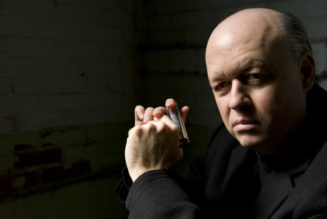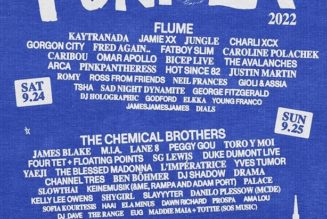Putting ourselves in contact with beauty is eminently important in order to cultivate wonder and the spiritual sense. We were created for beauty and have a need to experience it—otherwise our souls will atrophy. In Genesis, God puts man in a place of beauty, the “garden of delights,” replete with plants and animals. Seeing that this natural beauty is not enough, God puts a finishing touch to created beauty into Adam’s life: Eve.
In the modern world, beauty is an endangered energy source: we must be careful to water our souls with it as much as we water our houseplants—actually, much more careful. But don’t believe me; experiential knowledge of soul-watering music is much better.
Sacred and secular music remind us that only lovers sing, as St. Augustine says. Modern masters of lust scream and shout their rock songs, but medieval peasants sing of beauty, salvation, and death to their mother. In all ages, the love songs, whether to God or human beloveds, have been the most composed and performed of all musical genres.
Orthodox. Faithful. Free.
Sign up to get Crisis articles delivered to your inbox daily
The fertile bed of song is wonder, as Bishop Conley recently reminded students at Thomas Aquinas College. The pilgrim music of medieval Spain is no exception: peasant lovers, full of a premodern wonder, journeyed to sing the praises of the Queen of Heaven, using their memory and intelligence to form pious and clever songs. Filled as they are with wonder and peasant devotion, all lovers of Catholic culture deserve to know these haunting chants and vigorous dances.
What was their origin? For more than a thousand years, pilgrims have flocked to Santiago de Compostela in Spain. Famous even to secular hikers, hundreds of thousands continue to walk some length of it every year. Yet, Iberia boasts other ancient pilgrimage sites as well—and one is the home to some of the most beautiful Medieval music extant.
The pilgrimage site of the Benedictine Abbey of Montserrat is located on a site already holy in pre-Christian Spain: Romans had built a temple to Venus there. In the 800s, a monastery was founded there, and it became home to a miraculous statue. The statue of Our Lady of Montserrat is a “Black Madonna,” likely dating from the 12th century. Its Catalan nickname is “La Moreneta,” or the little dark one. Influenced by the Byzantine style, the statue depicts the pose of “Seat of Wisdom,” with the Christ Child on our Lady’s lap.
St. Peter Nolasco, founder of the Mercedarians, made a pilgrimage to Montserrat around 1203. Ignatius of Loyola visited the monastery of Montserrat on March 25, 1522, following his recovery from battle wounds. He placed his military gear before the image and embarked on the period of asceticism that proceeded his founding the Jesuits.
As with pilgrimages today such as the Chartres Pilgrimage, the faithful of the Middle Ages loved to sing as they walked or prayed. There must have been some, however, who were not so pious, for a collection of songs was made for the pilgrims so that they might have “chaste and pious” things to sing. As its anonymous compiler notes:
Because the pilgrims wish to sing and dance while they keep their watch at night in the church of the Blessed Mary of Montserrat, and also in the light of day; and in the church no songs should be sung unless they are chaste and pious, for that reason these songs that appear here have been written. And these should be used modestly, and take care that no one who keeps watch in prayer and contemplation is disturbed.
This collection of medieval songs is known as “The Red Book of Montserrat,” or Llibre Vermell de Montserrat, due to the color of its 19th-century binding. Containing ten songs, the strong melodies, beautiful lyrics, and dance rhythms have made these tunes some of the most popular in the early music world. But they shouldn’t be for secular scholars and performers alone—they are our Catholic patrimony in an eminent way. And unlike complex art, music can both be listened to and sung by the faithful of today just as when they were composed.
I could comment on every song, but I’ll limit myself to three. One of the two-part songs that I love to sing with my friends is “Stella Splendens.” The refrain contains clever references to the pilgrimage site with the words “monte” and “serrato”: Stella splendens in monte ut solis radium miraculis serrato exaudi populum. Translated as: “Star on the jagged mountain, radiating with miracles like the beam of the sun, hear the people.” If you want an easy piece of harmonized medieval music to learn, I can’t recommend this one highly enough. It is easy music, and it is extremely satisfying to sing.
The virelai or dance “Polorum Regina” is a hauntingly lilting and slow melody. The refrain of this monument to Medieval Marian piety is Stella matutína dele scélera—“star of the morning, wipe away our stains.” The three verses consecutively glorify the Virgin’s virginity before, during, and after birth. Finally, the “death dance” Ad Mortem Festinamus is exactly that: a powerfully upbeat song all about the fact that as “we hasten towards death” we should “desist from sin.”
My all-time favorite performance of “The Red Book of Montserrat” is by the Catalonian virtuoso Jordi Savall and his ensemble Hesperion XXI. The hour-long concert is professionally filmed in high-definition, giving excellent views of the many medieval instruments played. From oud—the Arabic lute—to harps, from the rustic medieval viol or “rabec” to lutes and psalteries, horns, bells, and drums, the wild, raw energy of the music is addictive. What spirit! Let us listen with gratitude to these modern musicians bringing us across the centuries to Spain and the dirty pilgrims full of lover’s wonder in the dawn at the “world-mothering” star of the morning.
Editor’s Note: This is the eighth in a series of articles explaining great works of music “in a nutshell.”










